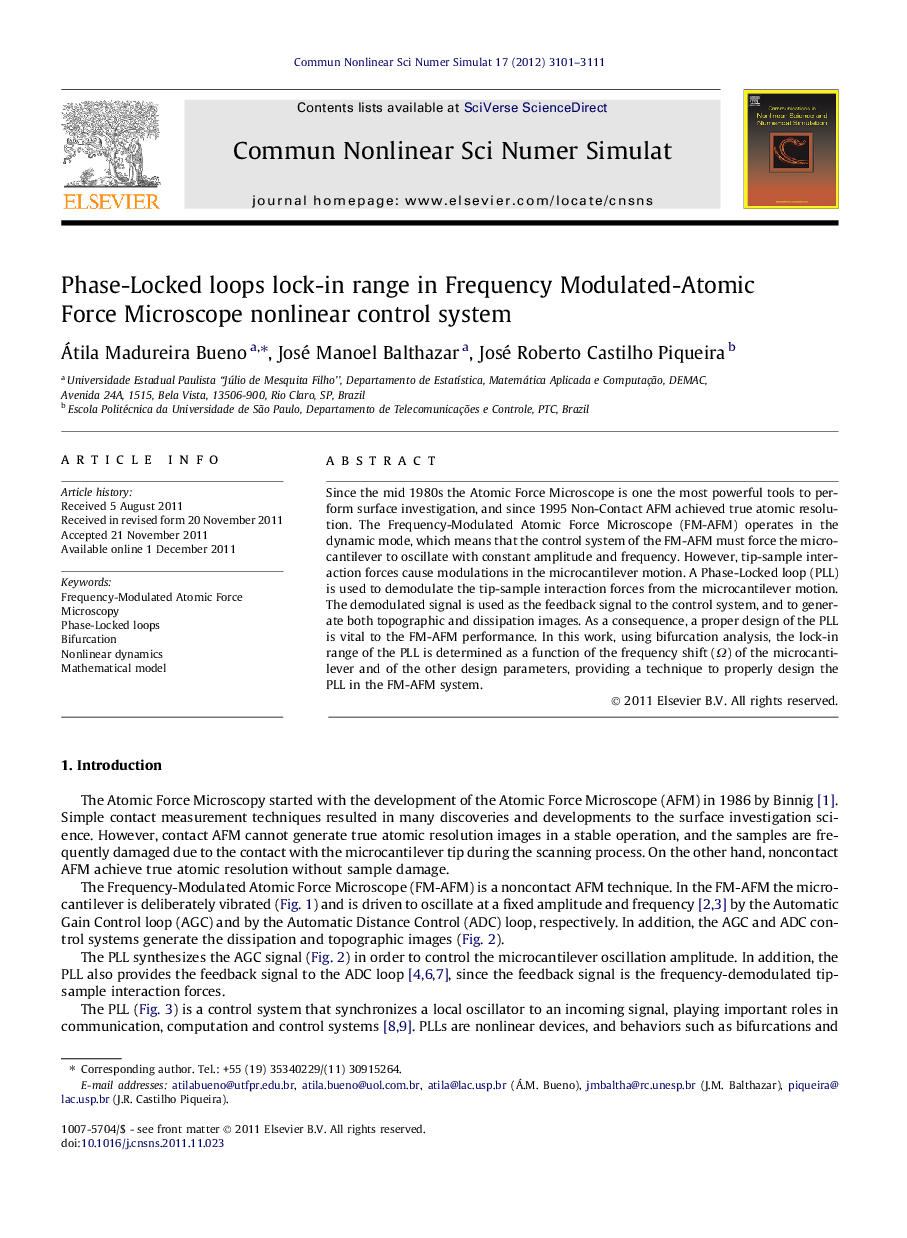| Article ID | Journal | Published Year | Pages | File Type |
|---|---|---|---|---|
| 758403 | Communications in Nonlinear Science and Numerical Simulation | 2012 | 11 Pages |
Since the mid 1980s the Atomic Force Microscope is one the most powerful tools to perform surface investigation, and since 1995 Non-Contact AFM achieved true atomic resolution. The Frequency-Modulated Atomic Force Microscope (FM-AFM) operates in the dynamic mode, which means that the control system of the FM-AFM must force the microcantilever to oscillate with constant amplitude and frequency. However, tip-sample interaction forces cause modulations in the microcantilever motion. A Phase-Locked loop (PLL) is used to demodulate the tip-sample interaction forces from the microcantilever motion. The demodulated signal is used as the feedback signal to the control system, and to generate both topographic and dissipation images. As a consequence, a proper design of the PLL is vital to the FM-AFM performance. In this work, using bifurcation analysis, the lock-in range of the PLL is determined as a function of the frequency shift (Ω) of the microcantilever and of the other design parameters, providing a technique to properly design the PLL in the FM-AFM system.
► PLL design applied to the FM-AFM is developed. ► Bifurcation analysis is used to determine the lock-in range of the PLL. ► The lock-in range depends on the frequency shift of the FM-AFM. ► The lock-in range is delimited by a saddle-node and Hopf bifurcations.
